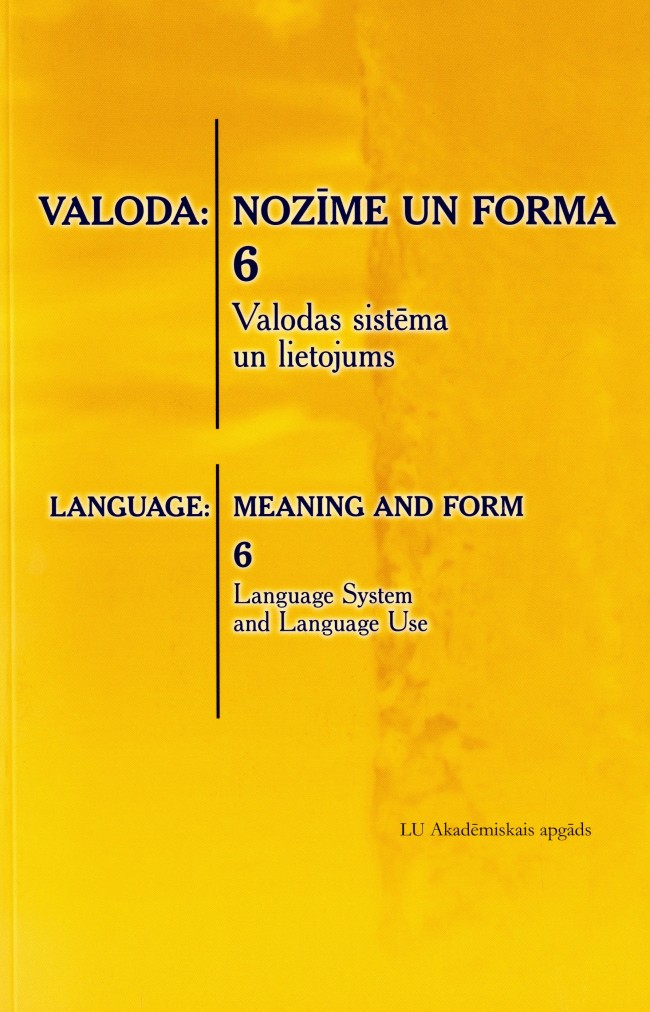Trešās personas vietniekvārdi „Līdzsvarotajā mūsdienu latviešu valodas korpusā” un zinātniskajos rakstos angļu valodā
The use of the third person pronouns in “The Balanced Corpus of Modern Latvian” and research articles in English
Author(s): Zigrida VinčelaSubject(s): Language studies, Language and Literature Studies, Comparative Linguistics, Baltic Languages
Published by: Latvijas Universitātes Akadēmiskais apgāds
Keywords: lietvārds; neīstās kopdzimtes lietvārds; vietniekvārds; kopdzimtes vietniekvārds
Summary/Abstract: The use of the third person pronouns differs in the Latvian and English languages if the pronoun antecedents are the nouns that denote a broad mixed-sex human group. The nouns that refer individually to a broad human group are labelled by Latvian linguists as false generic nouns and they traditionally follow the masculine gender inflection pattern and thus involve the use of generic he (all its forms). In the English language, there is no inflectional category for the gender of nouns, so the gender is signalled by the third person singular pronouns (he, his, him, himself for the male antecedents and she her, hers, herself for the female antecedents). As the English language does not have a sex-neutral third person singular pronoun, the generic he has been traditionally used in the cases when a noun refers individually to a broad mixed-sex group of humans. However, during the last four decades the generic he has been questioned because it is often perceived to be male and thus implies discriminatory pronoun use in favour of males. In order to explore the generic pronoun use in the English language a set of examples was extracted from three open-access journals containing articles in applied linguistics. The analysis of examples shows that the authors have avoided the use of generic he that has been replaced by coordinated pronoun forms (he or she; he/she), the combination s/he or the use they as a generic pronoun. However, the choice of generic he alternatives varies not only across the journals, but also in the articles belonging to one journal. The examples extracted from The Balanced Corpus of Modern Latvian (BCML) show that the nouns used in the contexts in which they denote a broad mixed-sex human group are used in masculine, and consequently serve as antecedents for the pronoun he.
Journal: Valoda: nozīme un forma
- Issue Year: 2015
- Issue No: 6
- Page Range: 212-224
- Page Count: 13
- Language: Latvian

